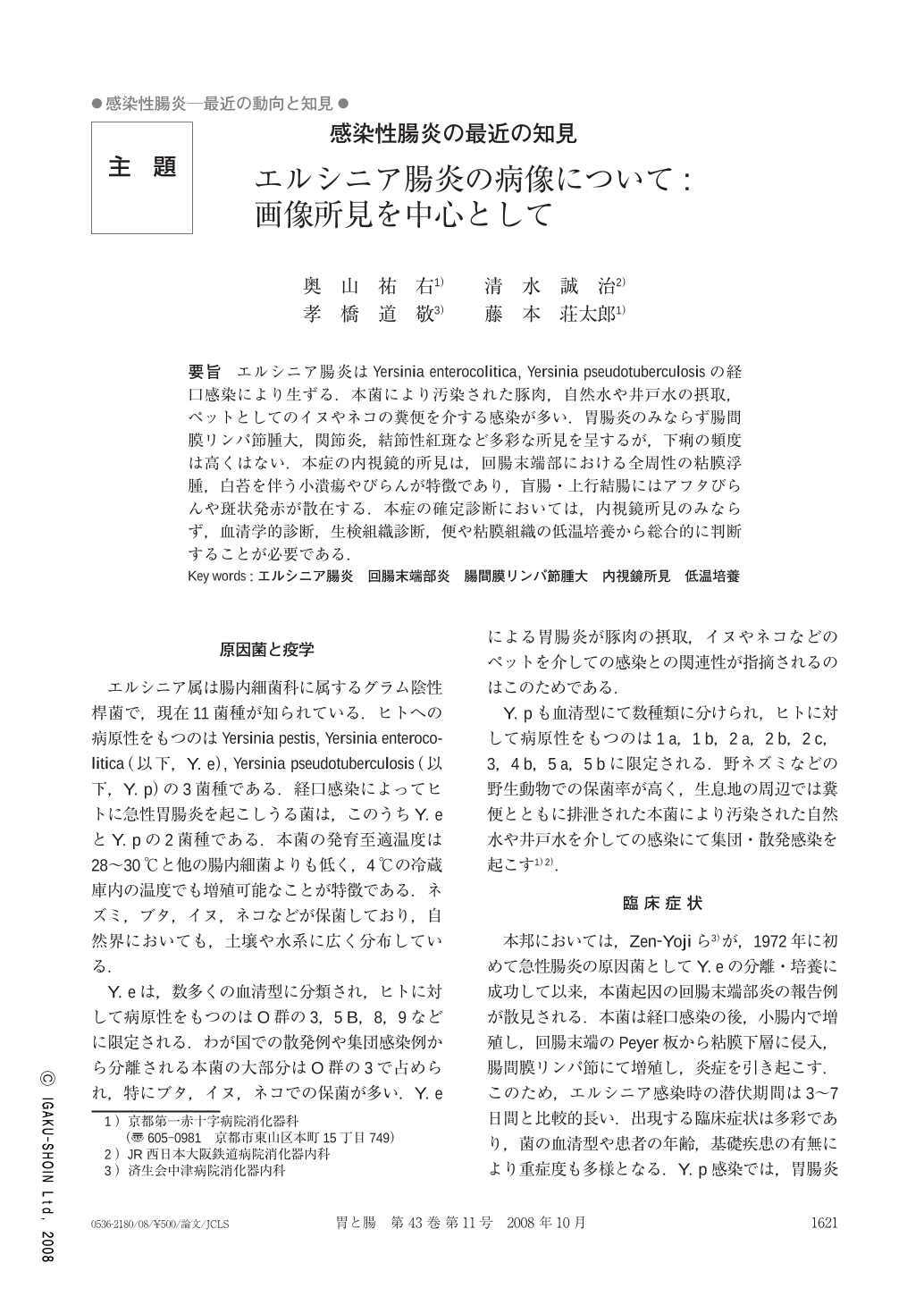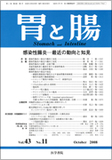Japanese
English
- 有料閲覧
- Abstract 文献概要
- 1ページ目 Look Inside
- 参考文献 Reference
- サイト内被引用 Cited by
要旨 エルシニア腸炎はYersinia enterocolitica, Yersinia pseudotuberculosisの経口感染により生ずる.本菌により汚染された豚肉,自然水や井戸水の摂取,ペットとしてのイヌやネコの糞便を介する感染が多い.胃腸炎のみならず腸間膜リンパ節腫大,関節炎,結節性紅斑など多彩な所見を呈するが,下痢の頻度は高くはない.本症の内視鏡的所見は,回腸末端部における全周性の粘膜浮腫,白苔を伴う小潰瘍やびらんが特徴であり,盲腸・上行結腸にはアフタびらんや斑状発赤が散在する.本症の確定診断においては,内視鏡所見のみならず,血清学的診断,生検組織診断,便や粘膜組織の低温培養から総合的に判断することが必要である.
Yersinia enterocolitis is caused through oral infection of mainly Yersinia enterocolitica and Yersinia pseudotuberculosis. Contaminated pork, pet droppings, and well water are the most commom sources of infection. The pattern of clinical manifestations are various, such as, gastroenteritis, mesenteric lymphadenitis, erythema nodosa, arthritis, and sepsis. Colonoscopic findings include edema, small ulcers, and erosions in the terminal ileum and several aphthoid erosions and patchy erythemas in the right- side colon. To diagnose Yersinia enterocolitis, not only colonoscopic findings but also serological examination, histological findings, microbiological examination of the stool and intestinal mucosa at a low temperature, are important.

Copyright © 2008, Igaku-Shoin Ltd. All rights reserved.


